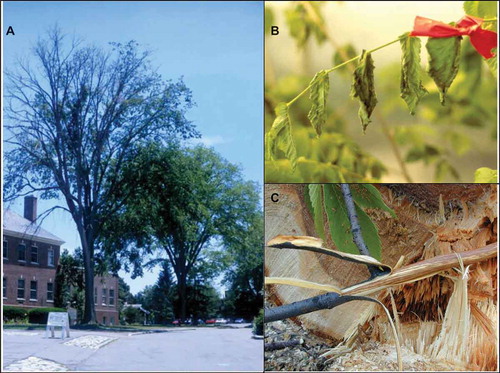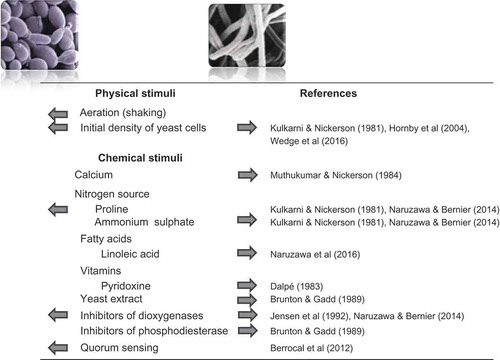Figures & data
Fig. 1 (Colour online) Symptoms of Dutch elm disease (DED): (A) extensive crown dieback in a mature American elm (Ulmus americana) naturally infected by DED; note the healthy U. americana individual in the background; (B) close-up of external symptoms developing within 2 weeks on a U. americana sapling inoculated with Ophiostoma novo-ulmi under greenhouse conditions; (C) typical internal symptoms characterized by brown streaks in the xylem of a DED-infected U. americana individual. Streaks result from the oxidation of phenolics produced in response to infection (photo courtesy of G. Bussières, Université Laval).

Table 1. Current nomenclature of the Dutch elm disease fungi.
Fig. 2 (Colour online) Summary of the effect of various physical and chemical factors on the yeast-mycelium transition in the Dutch elm disease fungi (photos of yeast-like spores and mycelium courtesy of M. Aoun and K.V. Plourde, Université Laval). Arrows indicate the effect of a given stimulus. Initial cell density can have opposite effects: inoculation with a low yeast cell density stimulates mycelial growth, whereas a high concentration inoculum favours yeast growth.

Table 2. Summary of genome statistics for Dutch elm disease pathogens and two other Ophiostomatales.
